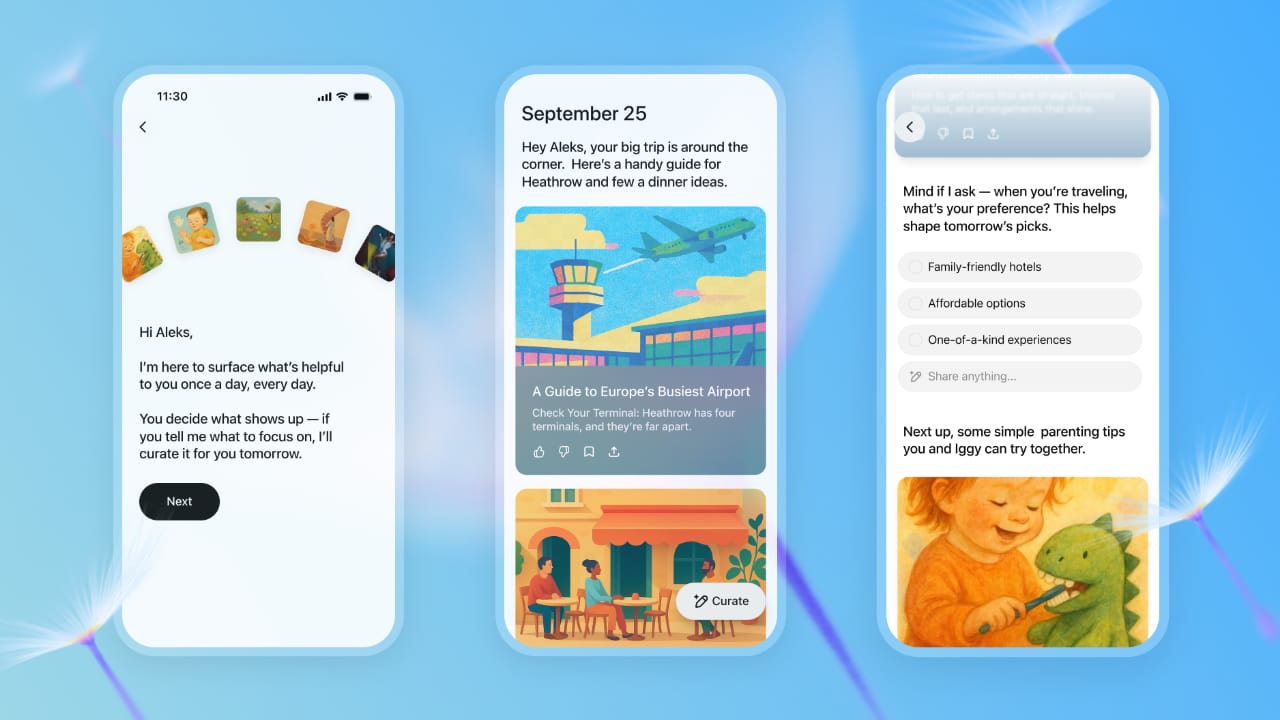ChatGPT Pulse: From Reactive AI to Proactive Assistance

Artificial intelligence has been mostly reactive until now. You asked a question, the system answered. That model is changing with ChatGPT Pulse, a new feature from OpenAI that shifts AI into a proactive assistant role. Instead of waiting for your input, Pulse researches on your behalf and delivers personalised insights, summaries, and action points directly to you.
At Scalevise we follow these developments closely because they reshape how businesses can save time, streamline workflows, and make better decisions. In this article we explain what ChatGPT Pulse is, how it works, the opportunities and risks, and what this means for teams that want to stay ahead.
What is ChatGPT Pulse?
ChatGPT Pulse is a new mode available for Pro users on mobile. It generates a daily set of cards containing curated insights. These can include follow ups on your previous conversations, new research about topics you care about, and reminders pulled from your connected tools such as Gmail or Google Calendar.
The key change is initiative. Instead of passively waiting for your prompts, Pulse identifies what could be useful for you, runs background research overnight, and presents the results in the morning. This marks a shift from on demand AI to continuous assistance.
How ChatGPT Pulse Works
Although OpenAI keeps the full technical details under the hood, the announced design is clear enough:
- Background research: Pulse performs asynchronous searches while you are offline so that fresh insights are ready when you return.
- Contextual memory: It leverages your ChatGPT memory, your feedback on past answers, and your interaction history to shape what is shown.
- Integrations: When connected to Gmail or Calendar, Pulse can surface agenda items, emails, and deadlines that require attention.
- User feedback loop: You can guide Pulse by approving, rejecting, or fine-tuning the topics it offers. Over time this makes the suggestions more relevant.
- Safety checks: Every item is screened against OpenAI’s policy filters before it reaches you.
This architecture suggests a hybrid between a personal research assistant and a daily AI briefing tool.
ChatGPT Pulse Example
Example Use Cases of Proactive AI
For business leaders
Imagine opening your phone in the morning and receiving three cards:
- A summary of market news relevant to your sector.
- A proposed agenda for your afternoon client meeting.
- A reminder that a contract draft in your inbox has not been reviewed.
For knowledge workers
Students, analysts, or consultants could receive updates on new publications, trend reports, or curated reading lists that match their projects.
For personal productivity
Pulse can recommend local events, fitness reminders, or travel updates based on your personal preferences and schedule.
These examples show why proactive AI assistants are not simply a “nice to have” feature but a real step toward AI-driven productivity.
Benefits of ChatGPT Pulse
The main advantages can be grouped into four areas:
- Proactivity
You no longer need to remember every question. Pulse works in the background and pushes useful information to you. - Personalisation
The AI tailors results to your interests, calendar, and past conversations. - Efficiency
Instead of scanning multiple sources and apps, you get a condensed set of highlights that matter. - Continuous learning
With each round of feedback, Pulse adapts to your preferences, which means long-term improvements in quality.
For companies this translates to prepared teams, fewer missed signals, and faster decision making.
Limitations and Risks of Pulse
Despite the promise, Pulse is still in preview and carries clear limitations:
- Suggestions may not always be relevant. In some cases the system will misjudge what matters to you.
- Privacy concerns exist, especially if you connect Gmail or Calendar. Businesses should evaluate compliance before linking sensitive accounts.
- Asynchronous research can sometimes bring outdated or incomplete data.
- Overuse can create information fatigue if the system delivers too many cards or irrelevant topics.
Being aware of these constraints helps businesses adopt the tool responsibly rather than blindly.
Why This Matters for Enterprises
At Scalevise we see ChatGPT Pulse as an early example of what enterprise AI assistants will look like. Instead of reacting to tickets, prompts, or manual queries, the next generation of tools will proactively monitor workflows, highlight risks, and recommend actions.
For fast growing companies this creates leverage. Teams can reduce context switching, stay informed about critical issues, and rely on the AI to surface the right information at the right time. With proper design and integration, this becomes a competitive advantage.
The Future of Proactive AI
ChatGPT Pulse is likely just the beginning. The roadmap could extend toward:
- Integration with CRM systems and project management tools.
- Smart triggers that deliver insights exactly when needed.
- The ability to not only suggest but also perform actions, such as drafting emails or scheduling meetings.
- Expansion from mobile to desktop dashboards and enterprise platforms.
The evolution is clear: AI will not only answer but will anticipate, prepare, and execute alongside human teams.
Conclusion
ChatGPT Pulse is a preview of the next wave of AI: a shift from reactive tools to proactive assistants. It shows how intelligence can operate in the background, curate what matters, and free people to focus on decisions rather than searches.
At Scalevise we help businesses adopt and scale these innovations. From workflow automation to AI-powered assistants, we design the strategies and build the integrations that make technology actually useful. If your team wants to explore how AI like Pulse can be embedded into your operations, get in touch with us today.
